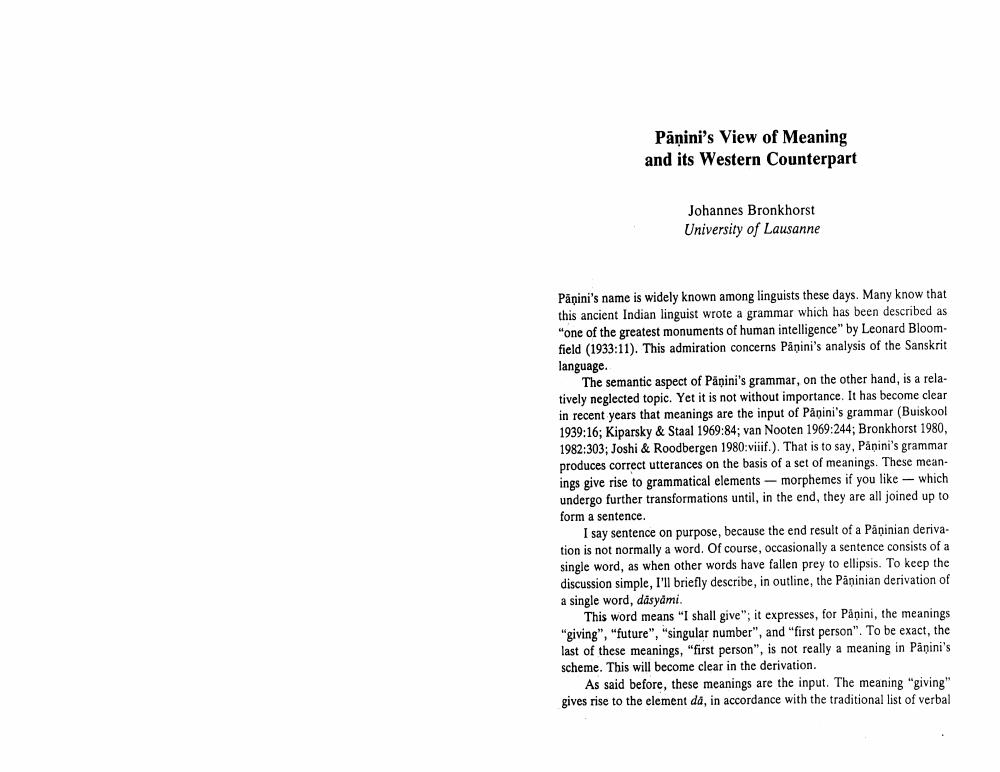Book Title: Paninis View Of Meaning And Its Western Counterpart Author(s): Johannes Bronkhorst Publisher: Johannes Bronkhorst View full book textPage 1
________________ Pänini's View of Meaning and its Western Counterpart Johannes Bronkhorst University of Lausanne Panini's name is widely known among linguists these days. Many know that this ancient Indian linguist wrote a grammar which has been described as "one of the greatest monuments of human intelligence" by Leonard Bloomfield (1933:11). This admiration concerns Panini's analysis of the Sanskrit language. The semantic aspect of Panini's grammar, on the other hand, is a relatively neglected topic. Yet it is not without importance. It has become clear in recent years that meanings are the input of Panini's grammar (Buiskool 1939:16; Kiparsky & Staal 1969:84; van Nooten 1969:244; Bronkhorst 1980, 1982:303; Joshi & Roodbergen 1980: viiif.). That is to say, Panini's grammar produces correct utterances on the basis of a set of meanings. These meanings give rise to grammatical elements - morphemes if you like which undergo further transformations until, in the end, they are all joined up to form a sentence. I say sentence on purpose, because the end result of a Påninian derivation is not normally a word. Of course, occasionally a sentence consists of a single word, as when other words have fallen prey to ellipsis. To keep the discussion simple, I'll briefly describe, in outline, the Paninian derivation of a single word, däsyämi. This word means "I shall give"; it expresses, for Panini, the meanings "giving", "future", "singular number", and "first person". To be exact, the last of these meanings, "first person", is not really a meaning in Panini's scheme. This will become clear in the derivation. As said before, these meanings are the input. The meaning "giving" gives rise to the element da, in accordance with the traditional list of verbalPage Navigation
1 2 3 4 5 6
